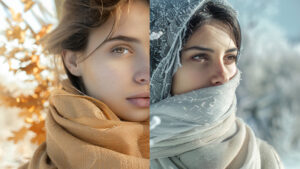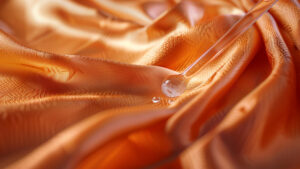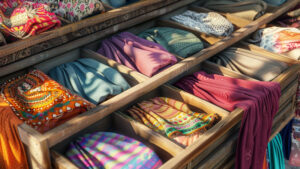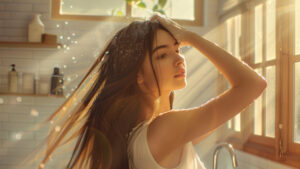
I still remember how my first scarf made me feel effortlessly stylish.
Different headscarves—printed, solid, lightweight, heavyweight, embellished, or versatile—give us countless ways to express personal style and comfort.
Let’s dive into their unique features together.
How do printed headscarves differ from solid color ones?
Printed headscarves can feel playful, while solid ones add understated charm.
Printed scarves tend to make a bold statement, whereas solid colors offer a timeless and adaptable look.
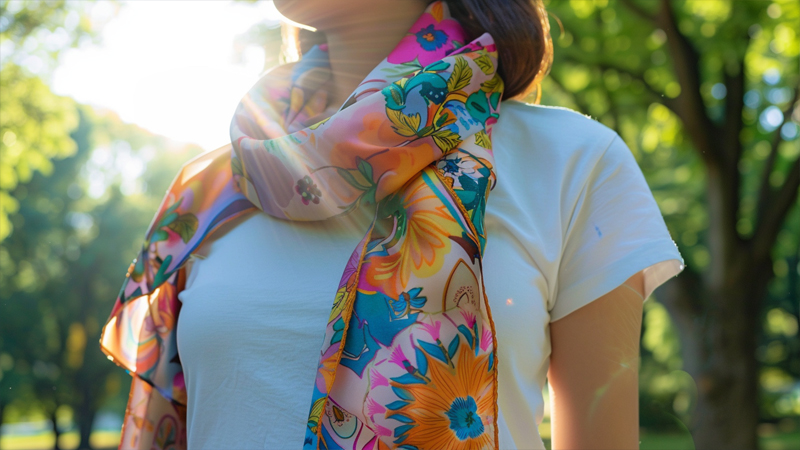
I still recall how one vibrant floral scarf transformed a simple outfit into something unforgettable. It was a breezy summer morning, and I wanted to add a pop of color to my white tee and jeans. A printed headscarf1 with bright blooms did the trick—instantly, I felt cheerful and noticed. That’s the magic of prints: they spark immediate interest. Some days, I go for an abstract design if I want that edgy vibe. Other days, a traditional pattern like paisley gives me a sense of vintage allure2.
Solid color scarves, on the other hand, have a beauty all their own. They can be a soothing pastel for a relaxed weekend or a bold shade—like ruby red—to announce my mood without fuss. I find these simpler scarves are perfect for layering; they don’t clash with patterned clothing or other accessories. Whenever I’m in a rush, a neutral solid wrap is my go-to because it’s almost guaranteed to pair well with anything in my closet.
When to Choose Printed vs. Solid
- Printed: Ideal for making a statement or adding flair to plain outfits.
- Solid: Versatile, easy to match, and effortlessly chic.
It’s also interesting how printed and solid scarves can reflect or even influence my mood. If I’m feeling bold, I’ll reach for that psychedelic swirl; if I’m aiming for calm, a neutral tone soothes me. Both types keep my wardrobe fresh—like having two sides of my style personality. Some people may own a handful of scarves, but I have a tiny collection so I can swap them around. Each one has its moment to shine.
What are the differences between lightweight and heavyweight headscarves?
Lightweight scarves breathe easily, while heavyweight options provide warmth.
Choose lightweight scarves3 for hot climates or active days, and opt for heavier fabrics in cooler weather or when seeking extra coverage.
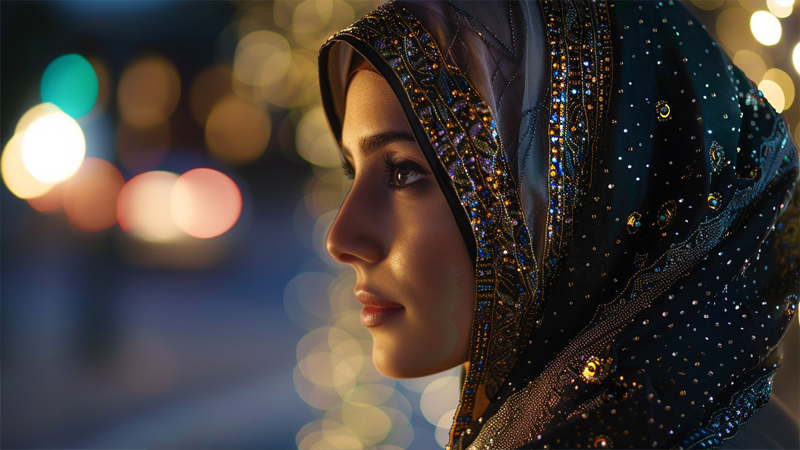
I discovered the contrast between lightweight and heavyweight scarves4 during a family trip to a seaside town. The morning sun felt mild, so I wore a thin cotton scarf that let the breeze through without trapping heat. By mid-afternoon, I felt cool and comfortable, even after lots of walking. That’s when it hit me: if I’d chosen a heavier wrap, I’d be sweating and fidgeting the whole time.
Lightweight scarves—like chiffon, silk blends, or cotton—are amazing for warmer days or even mild spring afternoons. They’re gentle against the skin and rarely feel claustrophobic. I also think they drape beautifully, adding a soft, feminine touch to any outfit. The airy feel can be practical too, especially if you’re traveling or need something that folds up small in your bag.
In contrast, heavyweight scarves—like wool, cashmere, or thick knits—help keep me snug when the temperature drops. My first encounter with a cozy wool scarf was on a brisk autumn evening stroll with friends. That wrap felt like a warm hug around my ears and neck. The heavier fabric also offers more coverage, which can be a godsend in windy or cold weather. However, wearing a thick scarf in humid conditions might make me feel stuffy.
Balancing Comfort and Climate
| Season | Recommended Fabric |
|---|---|
| Spring/Summer | Cotton, Chiffon, Silk |
| Autumn/Winter | Wool, Cashmere, Knits |
I’ve learned to think about my day before grabbing a scarf: Will I be indoors with air conditioning? Walking outside in the sun? Attending an evening bonfire? Each scenario demands a slightly different level of warmth or ventilation. Combining lightweight and heavyweight pieces in your wardrobe ensures you’re covered for every situation—literally. Over time, I’ve come to appreciate how these choices go beyond style; they’re also about feeling at ease wherever I go.
How do headscarves with embellishments stand out?
Embellished scarves add visual appeal, thanks to beads, embroidery, or tassels.
Decorative elements bring extra flair to headscarves, making them unique and eye-catching for special outings.
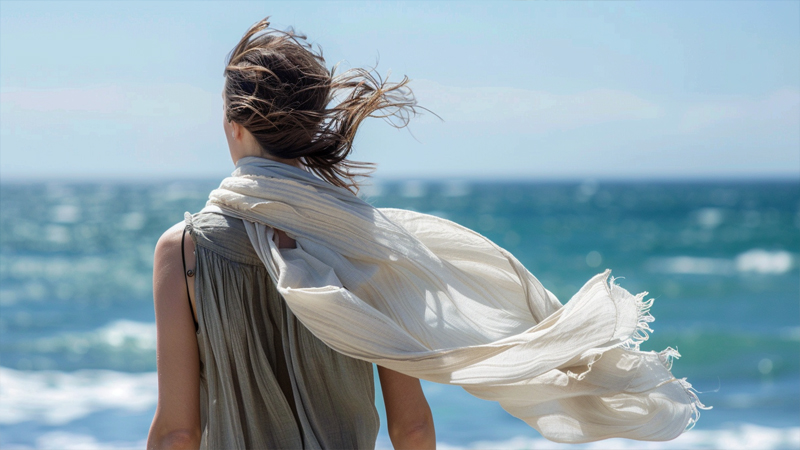
I’ll never forget the day I wore a beaded headscarf5 to a friend’s engagement party. Each tiny bead caught the light, and I felt like I was part of the celebration even before I said a word. Embellished scarves have a special charm that can elevate an otherwise simple look. You might see subtle embroidery along the edges or delicate tassels6 that sway when you move. Sometimes I opt for an all-over pattern of sequin details if I’m craving a bolder statement.
A Peek at Popular Embellishments
- Beads: Subtle sparkle that plays with light.
- Embroidery: Intricate stitches for an elegant vibe.
- Tassels or Fringe: Playful movement that adds character.
When choosing an embellished scarf, I think about where I’m going. If it’s a family gathering or a small party with friends, a lightly embroidered style can show that I’ve put in some thought without appearing over-the-top. For bigger events—like weddings or holiday dinners—I’m more open to glitz, especially if it complements the colors in my outfit. One time, I wore a deep navy scarf with gold threading that matched my dangly earrings. People kept asking if I’d had it custom-made. I just smiled, knowing how a little sparkle can create the illusion of something grand.
The flip side is that embellishments sometimes require extra care. After all, no one wants to snag beads or ruin delicate embroidery in the wash. I usually hand-wash my embellished pieces and store them flat in a protective cloth bag. Yes, it’s a bit more effort, but trust me, when the moment calls for an extra touch of glam, you’ll be glad you took care of that special scarf. It’s like having a secret weapon in your accessory collection.
What versatile headscarf designs are available for multiple uses?
Versatile headscarves can be styled in countless ways—like turban wraps, shawls, or even belts.
Look for flexible sizes, durable materials7, and simple patterns or colors8 that can suit various outfits and occasions.
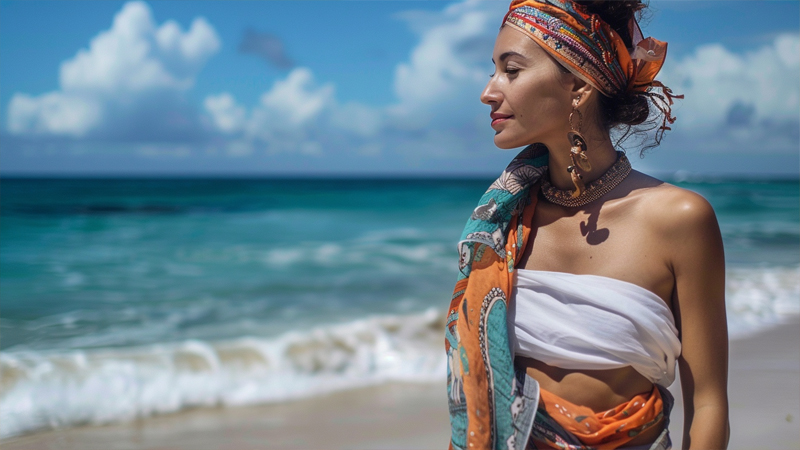
I’ve always loved a good multifunctional scarf. One second, it’s keeping my hair in place; the next, it’s draped over my shoulders as a light cover-up. A day trip to the beach once proved how versatile these scarves can be. I wrapped a large cotton piece around my waist as a sarong, used it to shield my shoulders from the sun, and then later tied it around my hair when the ocean breeze got fierce. That single accessory saved me from packing multiple items, which was a total win for my overstuffed tote.
Creating Multiple Looks
Sometimes, I like to fold a moderately sized scarf into a narrow band, wearing it like a headband that peeks out under my hair. Other times, I’ll tie it at the back of my neck with the ends trailing down my back—instantly, my casual T-shirt and jeans transform into something more polished. On cooler evenings, a versatile scarf can even double as a shawl over a simple dress. I love how it adds a pop of color while providing a bit of warmth.
If I want to really get creative, I’ll try using these scarves as belts by looping them through my jeans. It’s a subtle way to carry a pattern throughout my outfit. I’ve also tested them as accent pieces on my handbags: a small scarf knotted around the handle can bring personality to an otherwise plain purse. Because these designs often come in lightweight and durable fabrics, they stand up to experimentation better than heavily embellished scarves might.
Ultimately, a well-chosen versatile scarf is like a best friend in my closet: it’s there for me through quick outfit changes, unexpected weather shifts, and last-minute style upgrades. And the best part is I don’t have to worry about it clashing with too many things because they usually feature simple patterns or solid hues. This means I can grab one on the go, confident it’ll fit whatever look I’m aiming for that day.
Conclusion
Headscarves open up a world of style—from bold prints to cozy knits—helping me feel confident and true to myself.
-
Discover creative styling tips and ideas to make your printed headscarf stand out in any outfit. ↩
-
Explore techniques and patterns that bring a vintage charm to your style using scarves. ↩
-
Discover the top lightweight scarves perfect for hot climates, ensuring comfort and style during warm weather. ↩
-
Learn how to select the ideal heavyweight scarves for cold weather, offering warmth and comfort in chilly conditions. ↩
-
Discover creative ways to style a beaded headscarf, ensuring you stand out at any event with elegance and charm. ↩
-
Learn how delicate tassels can add a playful and unique character to your fashion accessories, enhancing your overall look. ↩
-
Learn about the best materials for scarves that combine durability with style, ensuring your accessory lasts through many wears. ↩
-
Find out how selecting the right patterns and colors can make your scarf a go-to accessory for any outfit or occasion. ↩

